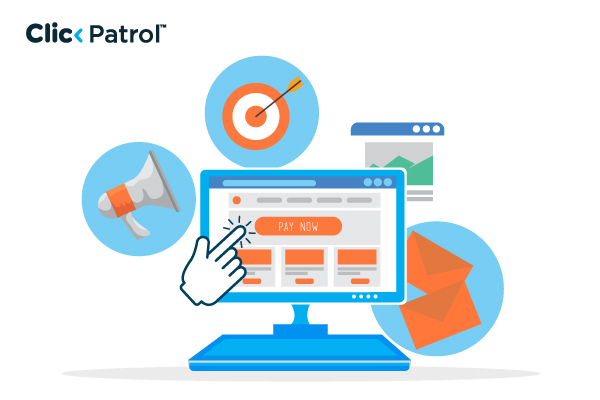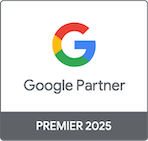Poor audience definitions, low-quality placements, bot traffic, and weak exclusion controls all contribute.
A strategic framework for eliminating ad targeting problems and maximizing ad performance
Abisola Tanzako | Nov 20, 2025

Table of Contents
- Understanding ad targeting problems and their root causes
- Step-by-step framework to eliminate ad targeting problems
- Step 1: Define clear targeting criteria
- Step 2: Audit current placements
- Step 3: Establish exclusion rules and guardrails
- Step 4: Monitor and optimize continuously
- Step 5: Integrate technology
- Step 6: Implementation roadmap
- Step 7: Metrics that matter
- Step 8: Common pitfalls to avoid
- ClickPatrol’s real-time solution for eliminating ad targeting problems
- Case study: How Avis cut CPA by 36% and boosted CTR by 91% with ClickPatrol
- How to permanently eliminate ad targeting problems with ClickPatrol
Ad targeting problems continue to plague marketers everywhere: wasted budget and damaged brand credibility from ads appearing on irrelevant, low-quality, or unsafe sites.
About 80% of digital ad spend is at risk due to unsafe brand environments, which ties directly into placement quality and the “where” part of targeting.
The problem is not always the audience; it is often the placement. When your ads are shown on bad sites or attract fake clicks, your targeting data becomes unreliable, and your ROAS declines.
This guide outlines a proven five-step framework to detect, prevent, and eliminate ad targeting problems from auditing placements to setting up real-time exclusions with ClickPatrol to improve ROAS, CTR, and brand safety.
Understanding ad targeting problems and their root causes
Ad targeting problems occur when ads fail to reach the right audience or appear in contexts that harm brand performance.
These issues can lead to wasted budget, poor campaign ROI, and even reputational damage.
Understanding the root causes is key to fixing them. Common causes include:
- Poor audience segmentation: Undefined or poorly layered audiences lead to ads reaching irrelevant users.
- Low-quality placements: Ads appear on low-traffic or misaligned sites, wasting impressions and risking fraud.
- Fraudulent traffic: Bots inflate clicks and impressions without real engagement or conversions.
- Inaccurate data and tracking: Faulty tracking or insufficient data leads to ads targeting the wrong demographics.
- Overlapping or conflicting campaigns: Multiple overlapping campaigns reduce effectiveness and confuse delivery algorithms.
Step-by-step framework to eliminate ad targeting problems
A straightforward, data-driven process ensures your ads reach real audiences on quality placements while maximizing performance and ROI.
Step 1: Define clear targeting criteria
Precision starts with clarity. Define exactly who, what, when, where, and why you are targeting:
- Who: Your ideal audience’s demographics, psychographics, and intent
- What: Desired outcomes such as clicks, conversions, or brand awareness
- When: Optimal timing and campaign phases
- Where: Platforms, sites, and content categories aligned with your brand
- Why: The purpose of each ad group or placement
Step 2: Audit current placements
Review your existing placements to uncover low-quality or irrelevant sites.
Use placement reports or tools like ClickPatrol to identify where your ads actually appear. Key questions to ask:
- Are my ads showing on reputable, relevant sites?
- Which placements generate clicks but few conversions?
- Are certain regions or devices producing suspiciously high click volumes?
Step 3: Establish exclusion rules and guardrails
After auditing, safeguard your ad integrity by excluding low-quality environments. Key strategies:
- Negative placement lists: Prevent ads on low-quality or irrelevant sites
- Minimum quality standards: Promote only on sites with satisfactory engagement and viewability
- Brand-safety filters: Block content types that could harm your brand (e.g., adult, hate, fake news)
- Geo and device rules: Exclude regions or devices with poor performance or high invalid traffic
- IP Blocking: Block repeated or suspicious IPs often associated with bots
- ClickPatrol automates these tasks, maintaining real-time exclusion lists to keep ads in safe, high-quality placements.
Step 4: Monitor and optimize continuously
Ad targeting is never “set-and-forget.” Fraudsters evolve, platforms change, and audience behaviour shifts.
Continuous monitoring ensures effectiveness. Ongoing tasks include:
- Tracking performance of placements weekly (CTR, conversion rate, bounce rate)
- Identifying underperforming or fraudulent placements
- Updating exclusion lists and adjusting bids or creatives
- Using tools like ClickPatrol for real-time alerts on fake clicks and low-quality placements
- This feedback loop improves targeting until every click and impression is meaningful.
Step 5: Integrate technology
Manual monitoring cannot scale efficiently. Innovative tools like ClickPatrol add automation and precision.
Advantages include:
- Click fraud detection: Instantly identifies fake clicks and invalid traffic
- Placement whitelisting and blacklisting: Keeps ads on reputable, high-quality domains
- Real-time analytics: Monitors click patterns, devices, geos, and conversions
- Automated blocking: Stops ads from showing on newly detected low-quality sites
Step 6: Implementation roadmap
- Phase 1 – Preparation: Gather campaign data and establish targeting metrics
- Phase 2 – Audit: Identify bad placements or invalid clicks using placement reports and ClickPatrol
- Phase 3 – Exclusion: Apply exclusion lists, IP blocks, and quality filters
- Phase 4 – Monitoring: Track key metrics such as click-to-conversion rate, bounce rate, and invalid click percentage
- Phase 5 – Optimization: Refine targeting, update exclusions, and redirect budget to high-performing placements
Step 7: Metrics that matter
Focus on metrics that directly measure targeting accuracy and placement quality:
- Click-to-conversion rate: Determines the real value of each placement
- Invalid click rate: Should decrease as low-quality placements are filtered out
- Bounce rate and time on site: Measures engagement quality
- ROAS / CPA: Higher-quality placements improve ROI
- Viewability & brand-safety compliance: Ensures ads appear where users are genuinely interested
Step 8: Common pitfalls to avoid
- Targeting audience demographics only, without focusing on placement quality
- Relying solely on ad platform data, which may under-report invalid clicks
- Equating volume with value, high clicks with low conversions may indicate fraud
- Failing to update exclusion lists regularly
- Reacting too slowly to suspicious traffic or anomalies
ClickPatrol’s real-time solution for eliminating ad targeting problems
With ClickPatrol, advertisers achieve cleaner targeting data, more effective campaigns, and stronger brand safety across all channels.
ClickPatrol provides an ad shield to protect against poor placements and fraudulent traffic:
- Automatically excludes irrelevant and low-quality sites
- Ensures ads show only on reputable, high-trust domains
- Detects fraudulent traffic before it skews analytics
- Offers evidence-based solutions for ongoing optimization
Case study: How Avis cut CPA by 36% and boosted CTR by 91% with ClickPatrol
Avis, a global car-rental brand, began experiencing serious issues with low conversions, high CPA, and poor campaign efficiency, driven by fake traffic and ineffective placement controls.
Challenges
- Lack of effective regulation for search engines in the region, leading to fake traffic and invalid clicks
- Manual methods, such as using negative keywords and regional targeting, were insufficient
- High CPA, low conversion rates, and wasted advertising budget
Solution
- Avis integrated ClickPatrol into their paid media routine. Key steps included:
- Daily monitoring of traffic by risk level (low, medium, high)
- Blocking invalid and suspicious traffic
- Focusing spending on credible, high-quality placements
- Using ClickPatrol’s dashboard to gain clear visibility into traffic quality and placement risk
Results
- Clicks: +47.6%
- CTR: +91.0%
- CPC: -3.4%
- Conversions: +123.3%
- CPA: -36.1%
By implementing ClickPatrol, Avis optimized their campaigns, reduced waste, and significantly improved ROI.
How to permanently eliminate ad targeting problems with ClickPatrol
Ad targeting success depends as much on where your ads appear as who sees them. Low-quality or irrelevant placements waste budget, distort data, and weaken brand trust.
A strategic framework including clear targeting criteria, regular audits, exclusion rules, continuous monitoring, and smart technology can transform campaign performance.
ClickPatrol empowers advertisers to remove bad placements, detect fake clicks, and ensure ads appear in credible, high-engagement environments. The result: cleaner data, higher ROI, and campaigns that connect with real audiences.
Start today by auditing placements, building exclusion lists, and integrating ClickPatrol to safeguard your advertising success.
Frequently Asked Questions
-
How do I spot bad placements? causes ad targeting problems?
-
How do I spot bad placements?
Bad placements often show high click-through rates but low conversion rates and short session durations. ClickPatrol automatically detects and blocks low-quality sites.
-
Can Google Ads fully protect campaigns?
Bad placements often show high click-through rates but low conversion rates and short session durations. ClickPatrol automatically detects and blocks low-quality sites.
-
How often should I audit placements?
Audit placements monthly or weekly for high-budget campaigns.
-
Does excluding placements reduce reach?
Slightly, but it improves ROI. ClickPatrol ensures ads reach real audiences on reputable, high-quality websites only.






